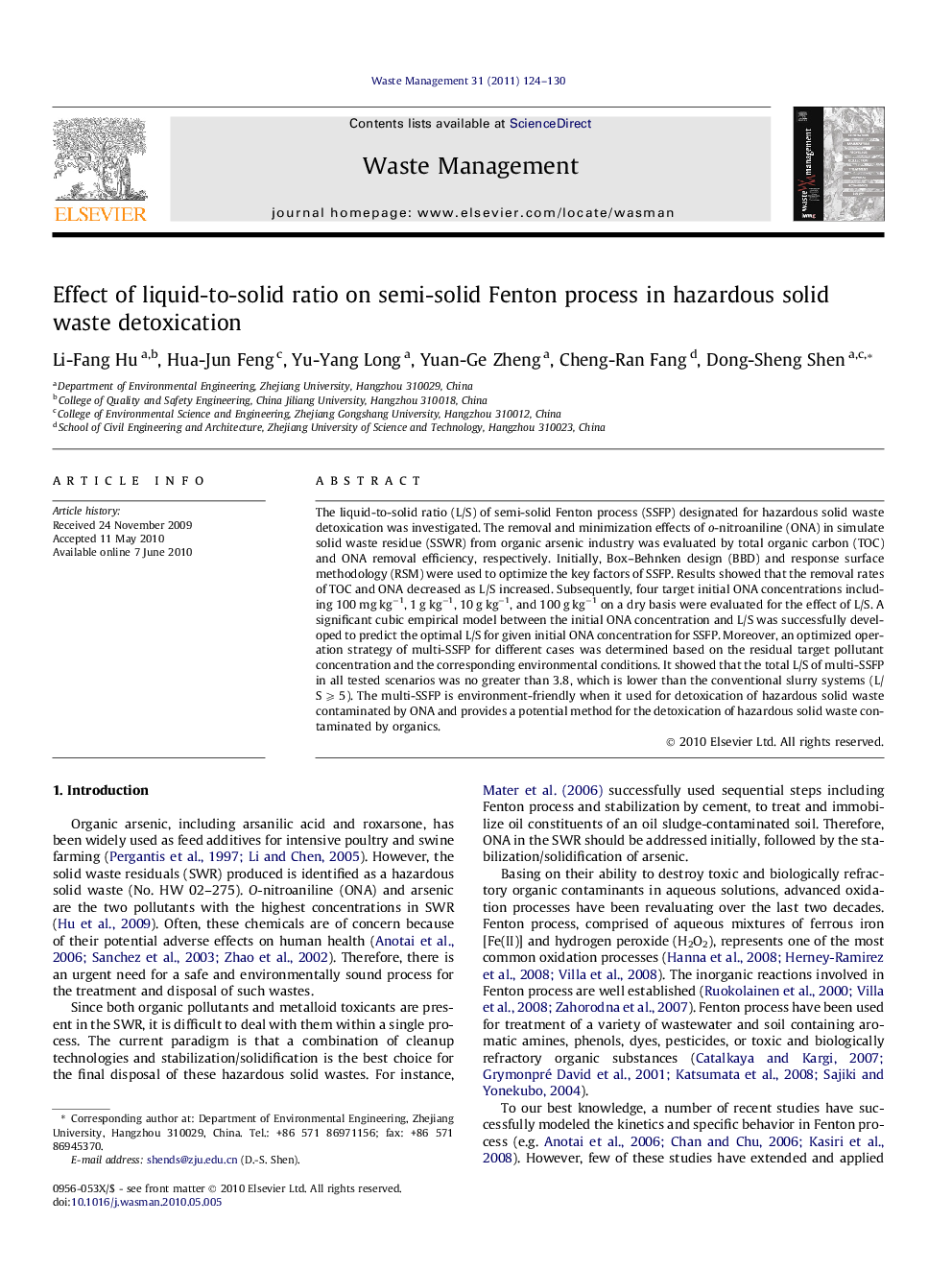| Article ID | Journal | Published Year | Pages | File Type |
|---|---|---|---|---|
| 4472112 | Waste Management | 2011 | 7 Pages |
The liquid-to-solid ratio (L/S) of semi-solid Fenton process (SSFP) designated for hazardous solid waste detoxication was investigated. The removal and minimization effects of o-nitroaniline (ONA) in simulate solid waste residue (SSWR) from organic arsenic industry was evaluated by total organic carbon (TOC) and ONA removal efficiency, respectively. Initially, Box–Behnken design (BBD) and response surface methodology (RSM) were used to optimize the key factors of SSFP. Results showed that the removal rates of TOC and ONA decreased as L/S increased. Subsequently, four target initial ONA concentrations including 100 mg kg−1, 1 g kg−1, 10 g kg−1, and 100 g kg−1 on a dry basis were evaluated for the effect of L/S. A significant cubic empirical model between the initial ONA concentration and L/S was successfully developed to predict the optimal L/S for given initial ONA concentration for SSFP. Moreover, an optimized operation strategy of multi-SSFP for different cases was determined based on the residual target pollutant concentration and the corresponding environmental conditions. It showed that the total L/S of multi-SSFP in all tested scenarios was no greater than 3.8, which is lower than the conventional slurry systems (L/S ⩾ 5). The multi-SSFP is environment-friendly when it used for detoxication of hazardous solid waste contaminated by ONA and provides a potential method for the detoxication of hazardous solid waste contaminated by organics.
